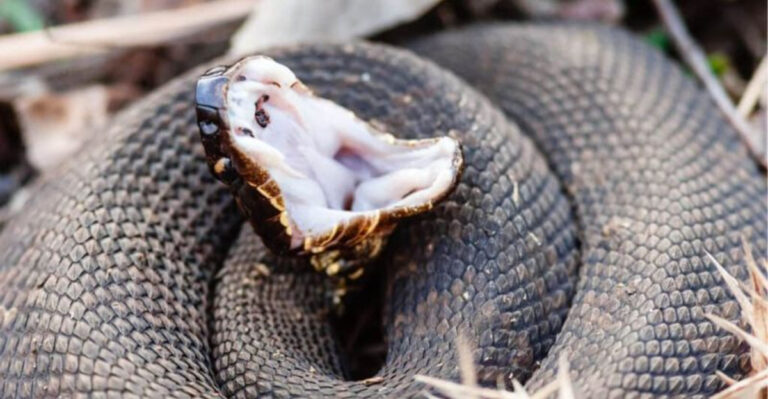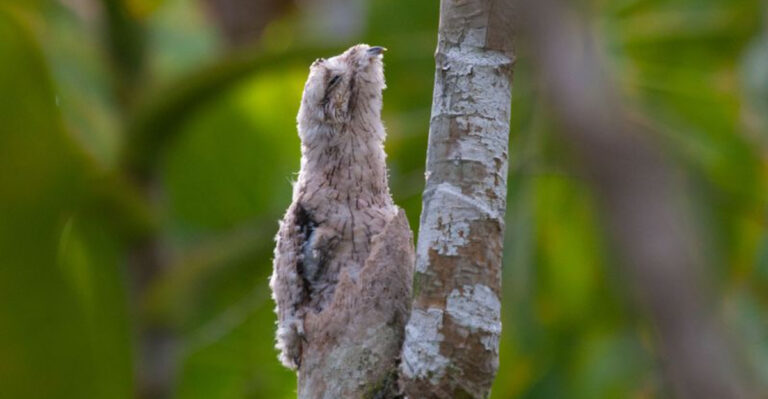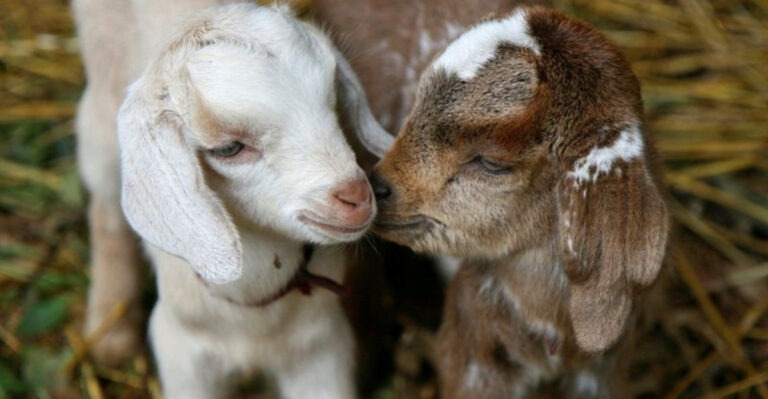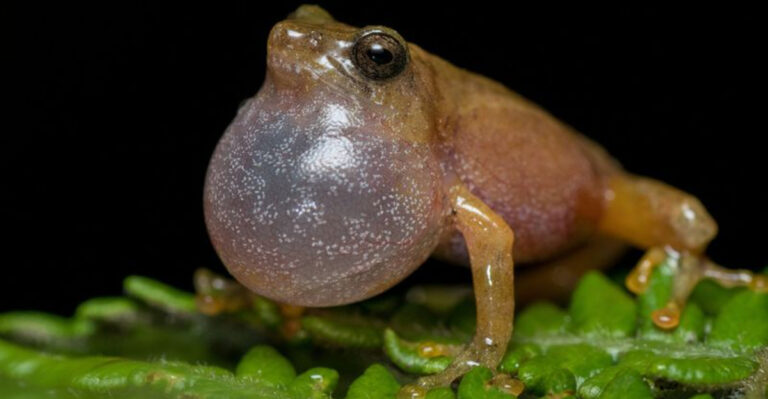The 15 Most Colorful Chameleon Species You’ve Probably Never Seen
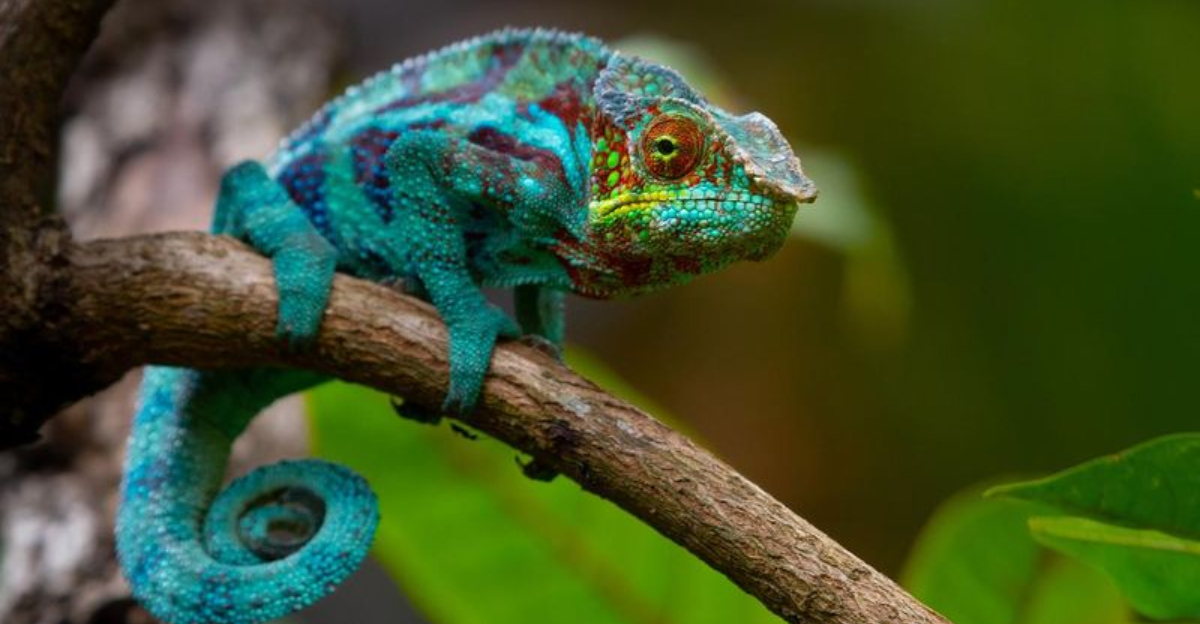
Chameleons are nature’s masters of disguise, but some species take color-changing to spectacular new levels.
While most people know these reptiles can change colors, few have seen the most vibrant and unusual chameleon species hiding in remote forests around the world.
1. Parson’s Chameleon
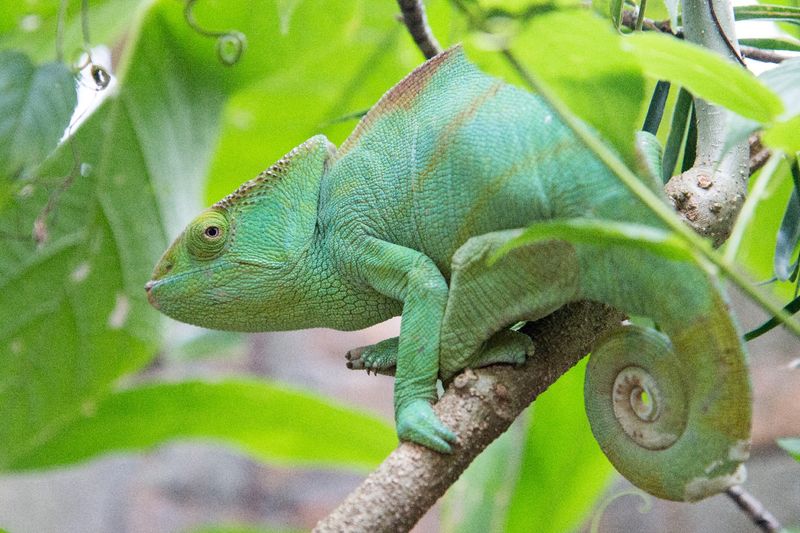
Madagascar’s giant gem boasts a kaleidoscope of greens, blues, and yellows that shimmer like precious stones. Males can grow over two feet long, making them one of the largest chameleon species alive.
What makes them truly special is their ability to display complex patterns when threatened or during courtship. Their massive, bulging eyes move independently, scanning the forest for both predators and tasty insect snacks.
2. Panther Chameleon
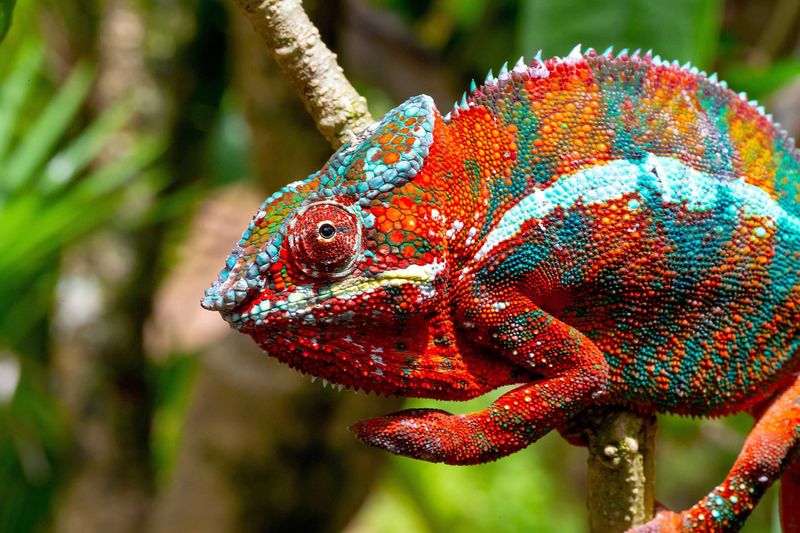
Rainbow warriors of the north Madagascar forests, panther chameleons display some of the most dramatic color variations of any reptile. Males from different regions sport unique color patterns – from vibrant reds in Nosy Be to cool blues in Ambanja.
Their spectacular color-shifting abilities serve as a mood ring, revealing their emotions and intentions. When relaxed, they might display soothing greens, but during territorial disputes, they transform into walking fireworks displays.
3. Veiled Chameleon
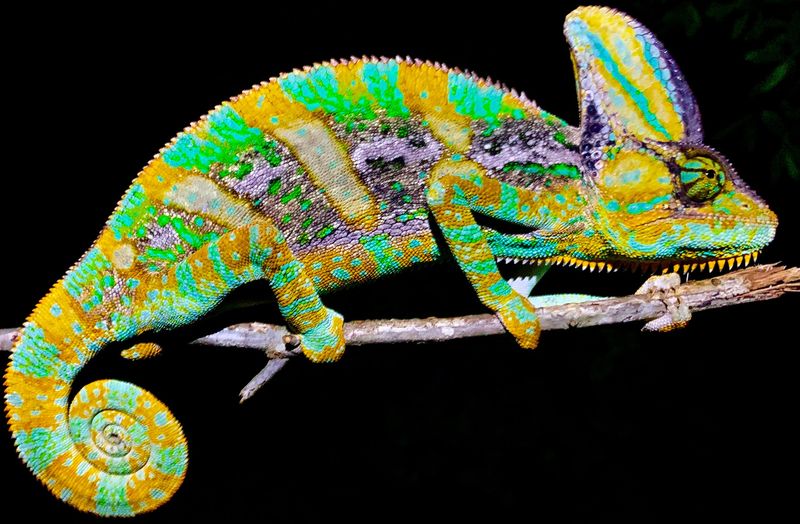
Sporting a distinctive crown-like casque atop its head, the veiled chameleon rules its territory with fashion and flair. Native to Yemen and Saudi Arabia, these reptiles showcase bands of green, yellow, blue and even gold across their bodies.
The casque serves as a rainwater collection system in their arid homeland. Males flash their brightest colors during territorial disputes, creating a natural light show that would put any disco to shame.
4. Carpet Chameleon
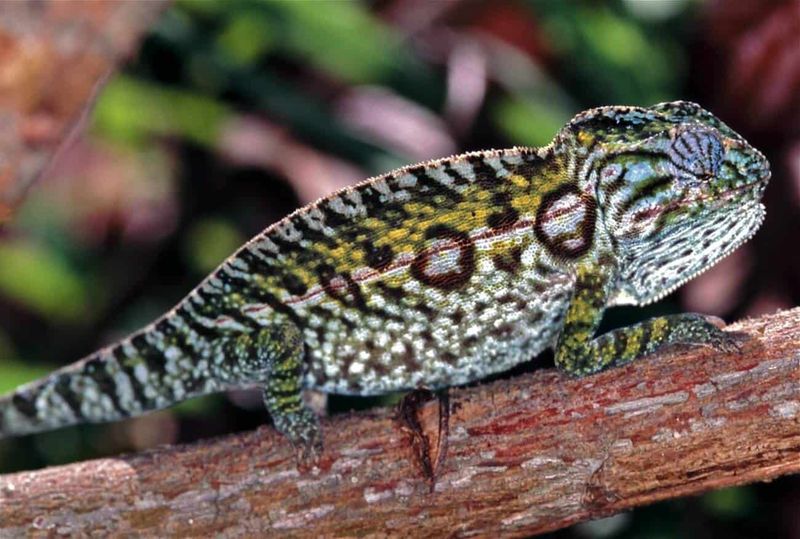
Tiny but mighty, these palm-sized wonders from Madagascar’s eastern rainforests sport psychedelic patterns resembling ornate carpets. Males display rich purples, blues, and reds that pop against the green forest backdrop.
Unlike their larger cousins, carpet chameleons spend much of their time in low vegetation. Their rapid color transformations happen in seconds – from camouflage browns to courtship purples – making them living mood rings of the reptile world.
5. Meller’s Chameleon
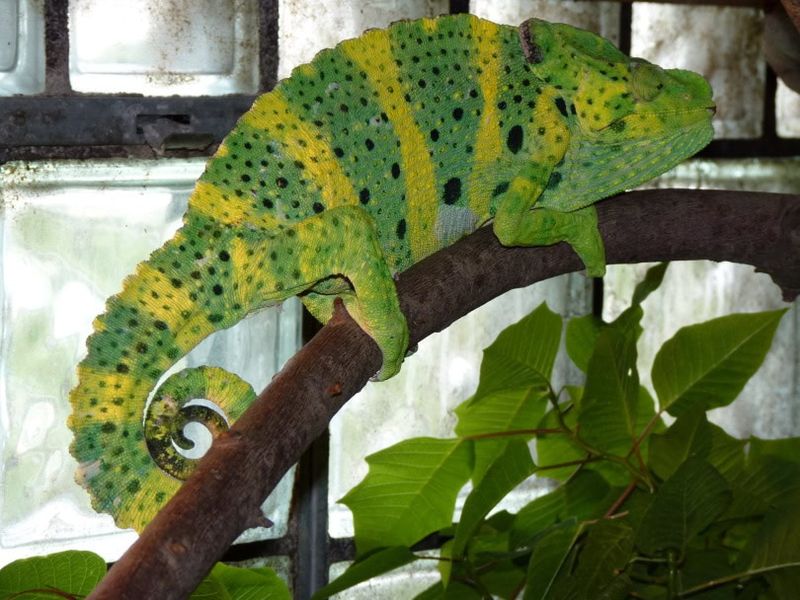
The gentle giants of the chameleon world, Meller’s chameleons can reach nearly two feet in length. Their color palette features striking combinations of emerald greens, sunny yellows, and occasional flashes of turquoise.
Native to Tanzania’s mountainous regions, these prehistoric-looking reptiles have a surprisingly docile temperament. Their massive jaws can deliver a powerful bite, yet they prefer to intimidate rivals with dramatic color displays rather than physical confrontation.
6. Jackson’s Chameleon
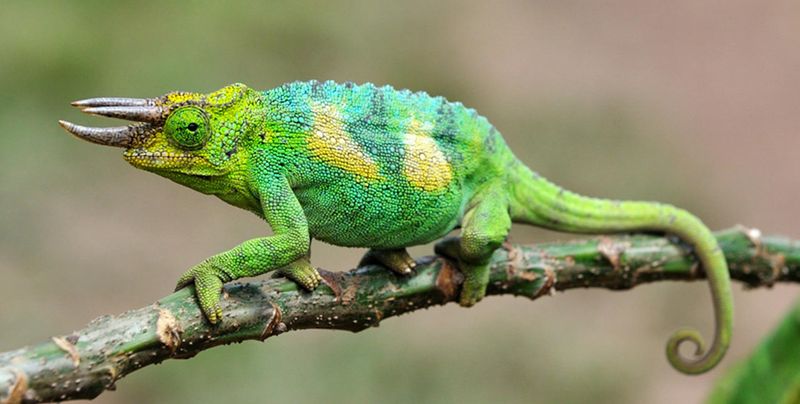
Three-horned wonders that look straight out of a fantasy novel, Jackson’s chameleons bring prehistoric drama to East African forests. Males sport three impressive forward-facing horns they use during territorial battles.
Their electric green bodies can shift to display patches of yellow, blue, and even purple when excited. Unlike most chameleons that lay eggs, these remarkable reptiles give birth to live young – tiny, fully-formed miniatures of their tri-horned parents.
7. Fischer’s Chameleon
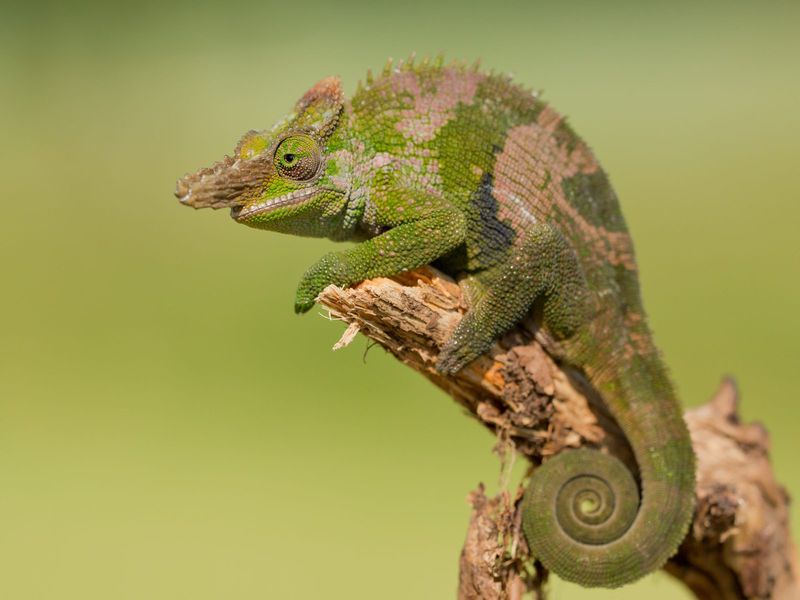
Mountain forest jewels of Tanzania and Kenya, Fischer’s chameleons sport unicorn-like horns and vibrant green bodies splashed with blue accents. Males develop impressive cranial ornaments that make them look like tiny forest dragons.
Their habitat in high-elevation forests means they thrive in cooler temperatures than most chameleons. When startled, they can transform from emerald green to dark blue-black in mere seconds – a dramatic costume change that bewilders potential predators.
8. Pygmy Chameleon
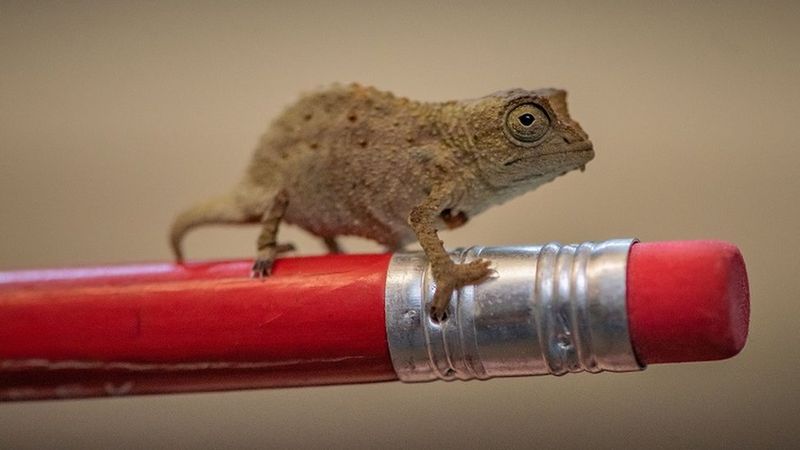
Leaf-sized miracle workers no bigger than your thumb, pygmy chameleons pack extraordinary color into miniature packages. These tiny Tanzania natives display browns, greens, and occasional flashes of orange or blue despite their diminutive size.
Unlike their larger relatives, pygmy chameleons can’t dramatically change colors – instead, they rely on subtle shifts to blend with forest floor debris. They walk with a distinctive rocking motion that mimics leaves swaying in the breeze, creating perfect camouflage.
9. Oustalet’s Chameleon
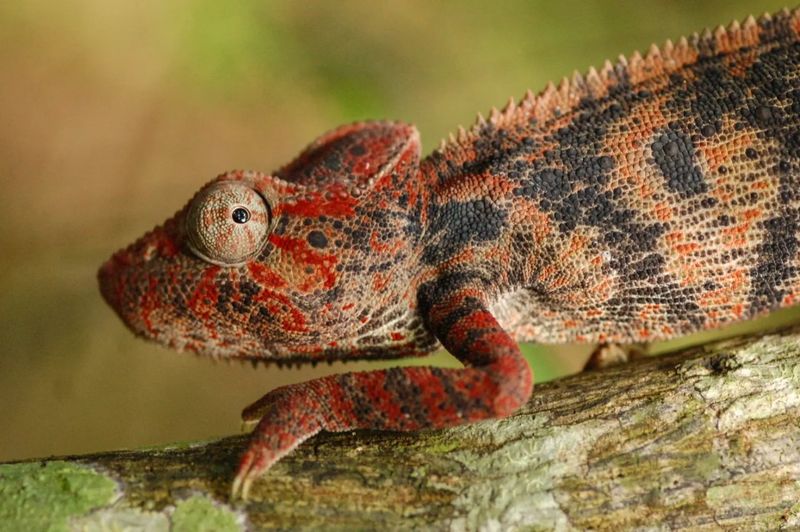
Madagascar’s heavyweight champion can reach a whopping two feet in length. These giants showcase an impressive array of greens interspersed with yellow, orange, and even red markings when displaying to rivals or mates.
Masters of disguise, they can blend seamlessly into their forest habitats or explode with color when the situation demands. Their remarkable tongues can extend nearly the length of their bodies, capturing prey with lightning-fast precision that the human eye can barely track.
10. Smith’s Dwarf Chameleon
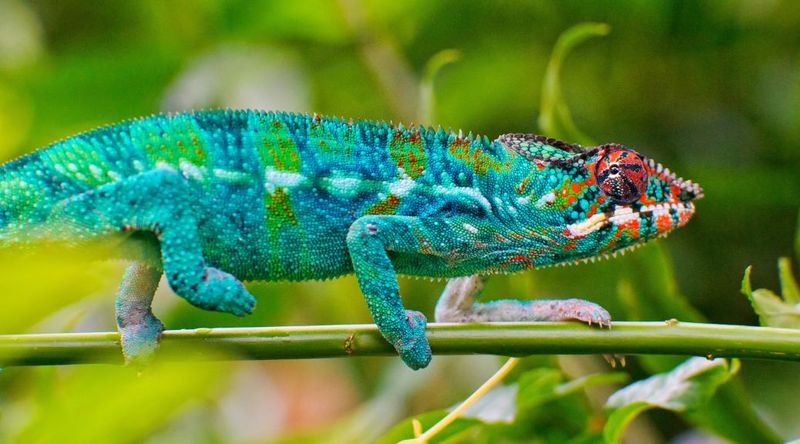
South Africa’s color-changing jewels, Smith’s dwarf chameleons blend forest greens with surprising pops of vibrant blue around their eyes and along their flanks. Despite their small size, they pack serious color punch.
These mini marvels communicate through color – flashing bright hues to signal readiness to mate or territory warnings. Unlike many chameleons that live high in the canopy, these ground-dwelling beauties make their homes in low bushes and grasses of South Africa’s coastal regions.
11. Four-Horned Chameleon
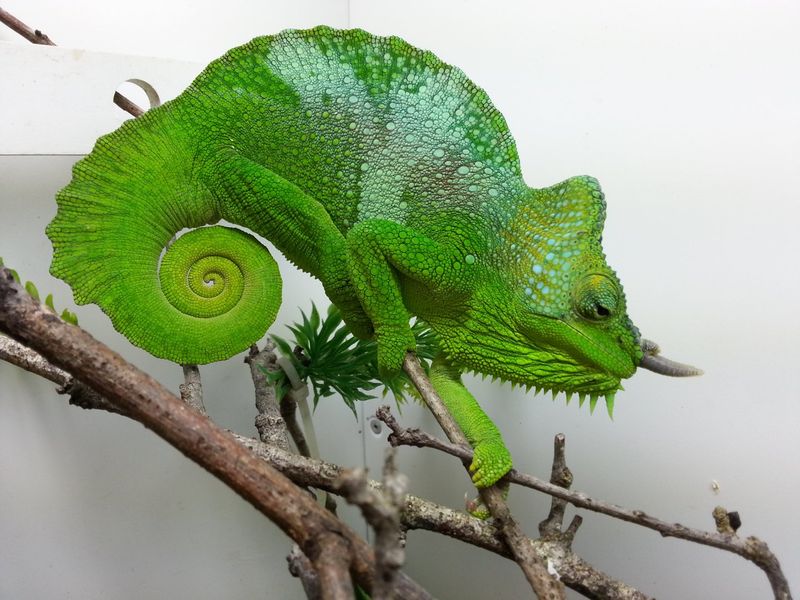
Nature’s walking crown jewels, four-horned chameleons boast an elaborate headpiece that makes them look like tiny medieval knights. Native to Cameroon’s forests, they display rich greens accented with yellows and occasional red flashes.
The four distinct horns that give them their name serve as both defense and courtship displays. Their remarkable ability to direct each eye independently means they can watch for predators from above while simultaneously hunting insects below – true 360-degree vision.
12. Furcifer Campani
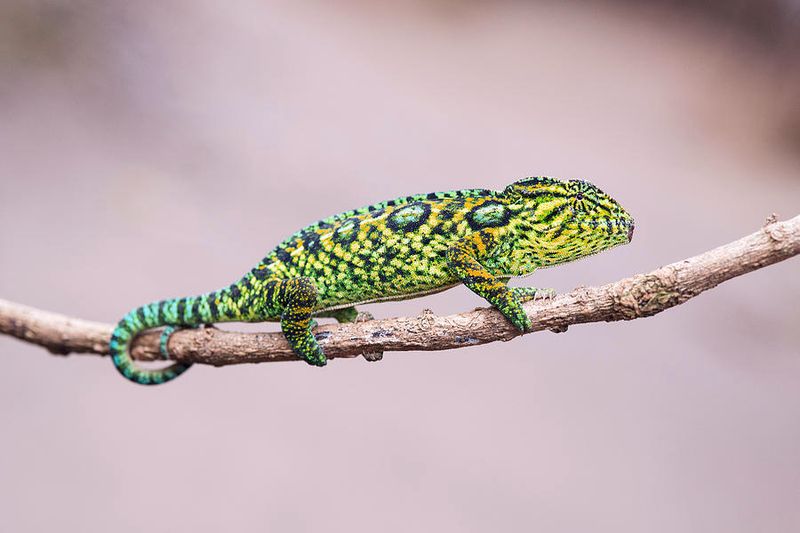
Highland specialists from Madagascar’s central plateau, these chameleons display striking blue faces that contrast beautifully with their lime-green bodies. When excited, males develop intricate patterns of red, orange, and yellow along their sides.
Adapted to cooler mountain climates, they bask in the morning sun to warm their colorful bodies. During breeding season, males engage in spectacular color competitions, each trying to outshine rivals with more vibrant displays – nature’s version of a rainbow contest.
13. Rudis Chameleon
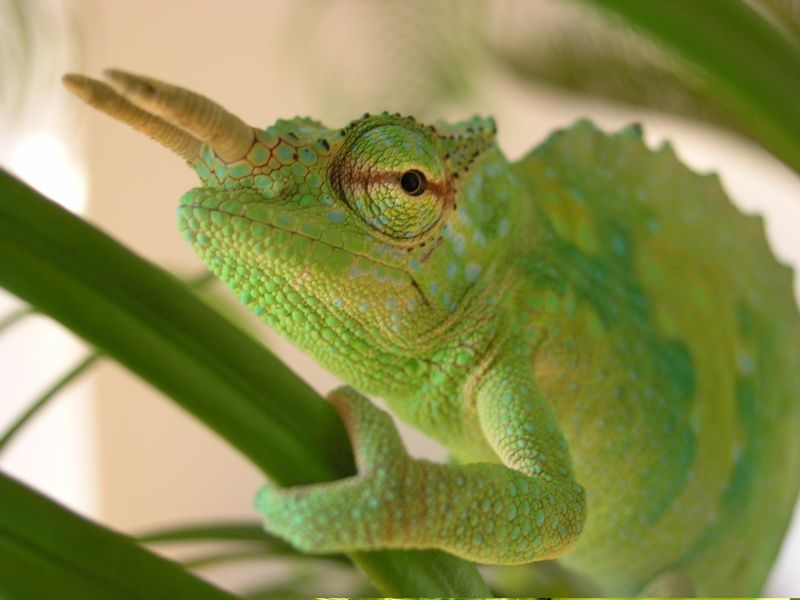
Montane forest specialists from Cameroon’s highlands, rudis chameleons showcase spectacular blue-green bodies decorated with yellow spots. Males develop impressive head crests that they raise during territorial displays.
Their extraordinary adaptation to high altitudes means they thrive in cooler, misty environments. When agitated, they can rapidly shift from serene blues to angry reds and oranges – their skin serving as a living emotional billboard that broadcasts their mood to all nearby forest dwellers.
14. Labord’s Chameleon
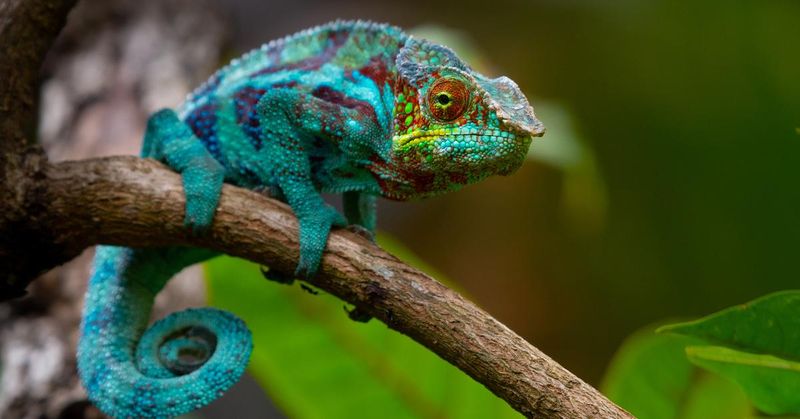
Madagascar’s annual miracle workers, Labord’s chameleons have the shortest lifespan of any four-legged vertebrate – just 4-5 months! During their brief lives, males display spectacular combinations of green, blue, and yellow to attract mates.
Their entire life cycle occurs within a single rainy season. After hatching, they grow rapidly, mate explosively, and then perish as the dry season arrives. This extreme strategy means the entire species exists only as eggs for most of the year – a remarkable adaptation to Madagascar’s seasonal rhythms.
15. Brookesia Micra
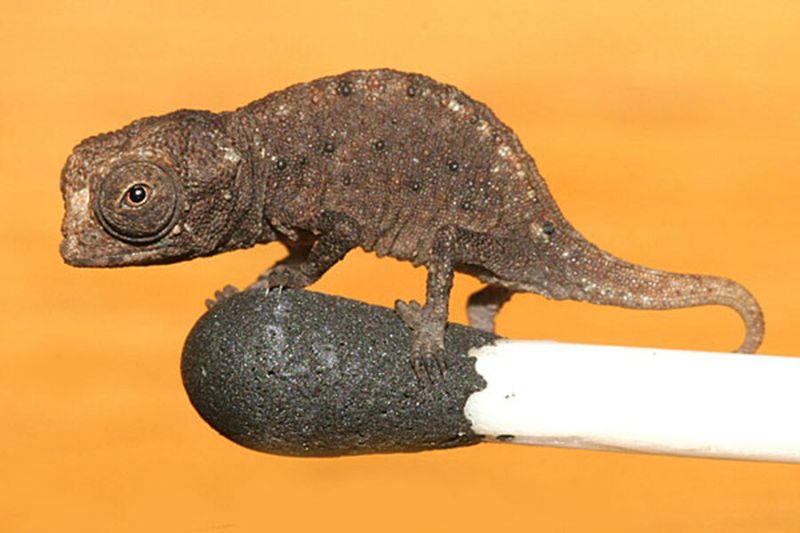
The world’s tiniest chameleon fits comfortably on a matchstick head! These micro-marvels from northern Madagascar measure just half an inch long but still manage impressive orange and brown color patterns.
Despite their minuscule size, they perform all the classic chameleon behaviors – from shooting their tongues at tiny prey to swiveling their eyes independently. Their discovery in 2012 shocked scientists who hadn’t imagined chameleons could evolve to such extremely small dimensions.

